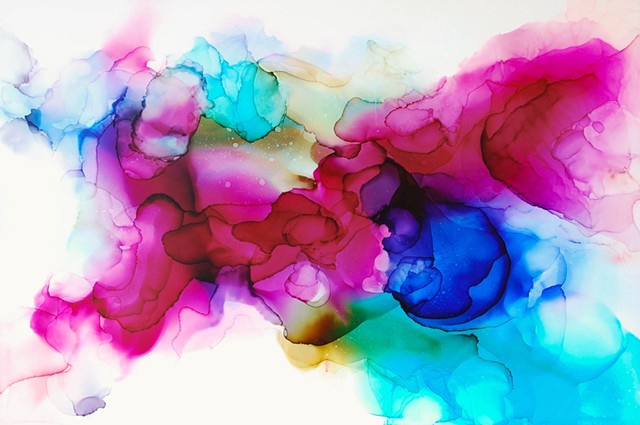Indianapolis, IN
Most abstract painters apply oil or acrylic to canvas using brushes; some make do with palette knives; one in particular was known to fling. A few, though, have found this whole business of planned mark-making tedious and predictable. In the latter half of the 1950s, the artists of the Washington Color School—among them Morris Louis and Sam Gilliam—decided to pour on paint of varying liquidity and let gravity play a larger part than usual. It’s a way of working that requires the artist to be in the moment, to be open to failure, and to accept the unexpected—as Lacy Pearson does in her work today. Pearson uses fluid paints and inks on clayboard to evolve compositions that suggest medical imaging, aerial views of canyons, and the interiors of giant mollusks. It may not be incidental that her early education and working life focused on radiation and traveling medical sales. Indeed, various types of medical imaging produce pictures that are striking both in terms of bodily revelations and aesthetics, uncannily illustrating the invisible, stilling the ephemeral, and creating something both unlike anything else and suggestive of much. That is fitting enough description of what Pearson herself does, and in a nod to the extraordinariness of it, she adds a sprinkling of gold leaf to finish off certain compositions.
—Lori Waxman 2019-05-01 12:45 PM
